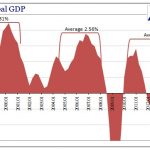US swap spreads (indicative of bank counterparty/liquidity risks) is surging once again, to its highest since June 2012 signaling a growing concern at the looming US debt ceiling deadline.
With about five weeks until the expiration of the U.S. debt-ceiling suspension pact, Bloomberg notes, swap spreads are suggesting traders are getting nervous that any hiccup in efforts to remove the burden could trigger a shortage on short-term government securities.

The difference between 2-year swap rates and Treasury yields is widening back to the 32.3 basis points level which was the most since June 2012. Societe Generale analysts led by Subadra Rajappa expect net bill issuance to drop by about $150 billion as Treasury shrinks its cash balance to $23 billion from $339 billion by the March 15 deadline.
And to make things even more clear, something odd is going on in the Treasury bill market..
Bloomberg notes that investors are willing to pay more for bills maturing in four weeks instead of five. That’s because they don’t want to be caught empty handed while the Treasury slows debt sales to push its cash balance lower as part of the 2015 pact to suspend the debt ceiling. The spread between the March 9 and March 16 bills may get a “a little more noticeable” as Treasury cuts issuance and provides a “clearer sense of how long bill supply is going to be lower than normal” going into the March 15 deadline, Jefferies economist Thomas Simons said in a phone interview.

Just add this to the list of things for Democrats to fight with the Trump administration over and it’s no surprise risk is blowing out. Which makes us wonder, perhaps credit markets know something stocks don’t…














Leave A Comment